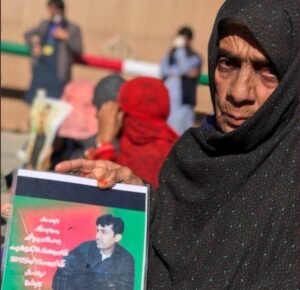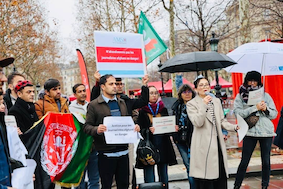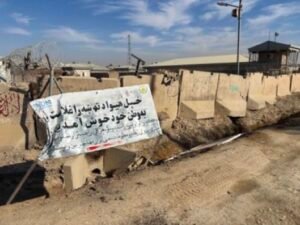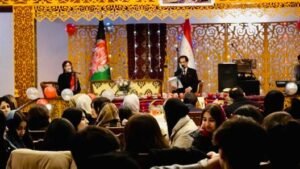A Fence of Fire: How Pakistan’s Durand Line Obsession Fuels Conflict in Afghanistan
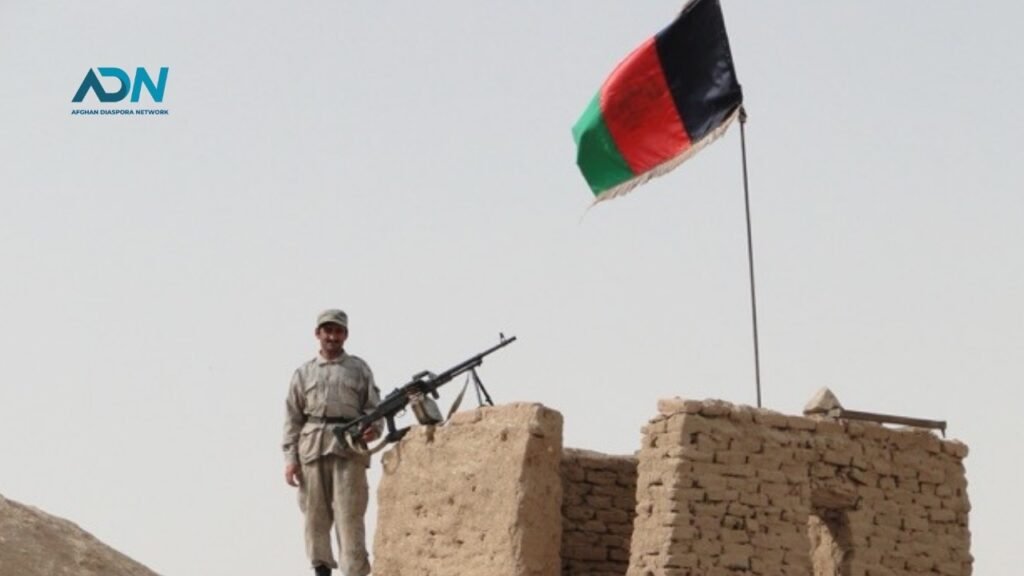
A border guard from the former Afghan Republic at a checkpoint in Herat, near the Iran border. The Taliban has since replaced the national tricolor flag with its own. Photo by @Ali Ahmad for ADN.
By A. Shafaq
For decades, Afghanistan has suffered the consequences of wars it did not start and borders it did not draw. The latest tensions along the Durand Line—a colonial relic of British cartography—once again expose Pakistan’s militarized approach to an unresolved issue that continues to poison relations between our two countries and destabilize the broader region.
From Helmand’s Dishika outpost to the bloodied trails of Torkham, Pakistan’s insistence on fencing the border, building new check posts inside contested zones, and launching cross-border raids reflects not just insecurity, but strategic aggression. The most recent skirmishes in May and June 2025, in Dishika and Bahramcha, are not “isolated incidents.” They are the direct result of Pakistan’s unilateral actions in territories that have never been demarcated with Afghan consent.
Afghanistan has never recognized the Durand Line. Not under kings, not under republics, and not under the Taliban’s Islamic Emirate. It divides Pashtun and Baloch families, severs trade routes, and disrespects history. The international community’s silence on Pakistan’s fencing spree—often aided by Chinese surveillance and Turkish drones—amounts to complicity.
Islamabad claims the line is “settled.” But if it were truly settled, why the constant skirmishes? Why the killings of Afghan border personnel? Why the use of airstrikes and artillery on Afghan villages?
In April and July alone, Pakistan claimed to have killed dozens of so-called Tehrik-i-Taliban Pakistan (TTP) militants” attempting to cross into Pakistan. Conveniently, these reports always emerge after Pakistani jets or commandos violate Afghan sovereignty. Islamabad frames every retaliatory measure by Afghan border forces as “provocation”—but who is building fences and firing first?
Pakistan’s Proxy Problem: Exporting Instability, Then Blaming Kabul
Pakistan’s long-running policy of nurturing extremist proxies for strategic depth—be it in Afghanistan, India, or Iran—is now backfiring. The TTP, a Frankenstein monster created in part by Pakistan’s own security calculus, now finds refuge in the tribal heartlands. But instead of dealing with the root causes of militancy—economic deprivation, ethnic marginalization, military impunity—Pakistan chooses to bomb across borders.
Afghans are repeatedly accused of “harboring terrorists,” even as Pakistan provides sanctuary and media platforms for figures like Hafiz Saeed and Masood Azhar. The Afghan Taliban have made it clear that they do not control all border tribes and cannot police every inch of terrain—but that is no excuse for Islamabad to launch airstrikes or kidnap Afghan civilians under the guise of counterterrorism.
Pakistan’s accusations that India is somehow behind TTP attacks inside Pakistan are laughable at best and diversionary at worst. Afghan blood is being spilled not because of India, but because Pakistan refuses to accept that Afghans will never legitimize the Durand Line as an international border drawn by colonial outsiders.
The Fence is a Wall of Mistrust
The so-called border fence, 4 meters tall with razor wire and cameras, is a wall of mistrust—dividing not just terrain but tribes. It prevents nomadic movement, severs trade, and fuels resentment among border communities. Pashtun families now require “border passes” to visit cousins a few kilometers away. This is not security. This is social fragmentation.
What does Pakistan expect? That fencing a disputed line will magically erase a hundred years of unresolved grievances?
Even within Pakistan, dissent is growing. Pashtun Tahafuz Movement (PTM) leaders and Baloch activists have condemned the fencing project and Pakistan Army’s coercive tactics. But Islamabad listens to no one—not its citizens, not its neighbors, not even its friends in Beijing.
China’s Shadow and a Dangerous Bargain
Pakistan’s recent rapprochement with Kabul—brokered by China—appears to be a bargain aimed at silencing Afghan resistance to China Pakistan Economic Corridor (CPEC) expansion and ensuring Taliban guarantees against cross-border TTP movement. But no foreign-brokered deal can replace genuine resolution of the border question. Beijing may prefer stability for its investments, but Kabul cannot and will not barter away sovereignty.
The Taliban’s engagement with China does not mean Afghanistan accepts the Durand Line or Pakistan’s militarization. Any true peace must begin with de-escalation, dialogue, and mutual respect—not airstrikes, accusations, and fences.
What Afghanistan Wants is peace. “We want recognition of historical grievances. We want cross-border cooperation, not coercion. We want our tribal people to live with dignity—not be labeled terrorists when they resist Pakistani aggression,” stated a tribal elder from Balochistan who now lives in Afghanistan’s Khost province. He continued:
If Pakistan truly wants stable borders, it must:
• Halt all border fencing until a political settlement is reached.
• Stop cross-border shelling and honor Afghan sovereignty.
• Engage in honest, multilateral dialogue—possibly under UN or OIC auspices.
• Treat border communities as partners, not pawns.
Until then, every bullet fired in Dishika, every missile launched into Kunar, and every Pashtun family divided by the fence will remind the world: Pakistan’s border policy is not about security. It is about domination. And Afghanistan will not be dominated—by fence, by drone, or by diplomacy conducted in foreign capitals.
A. Shafaq (pseudonym) is a researcher and lecturer at one of the private universities in Kabul.
Note: The contents of the article are of sole responsibility of the author. Afghan Diaspora Network will not be responsible for any inaccurate or incorrect statement in the articles.

